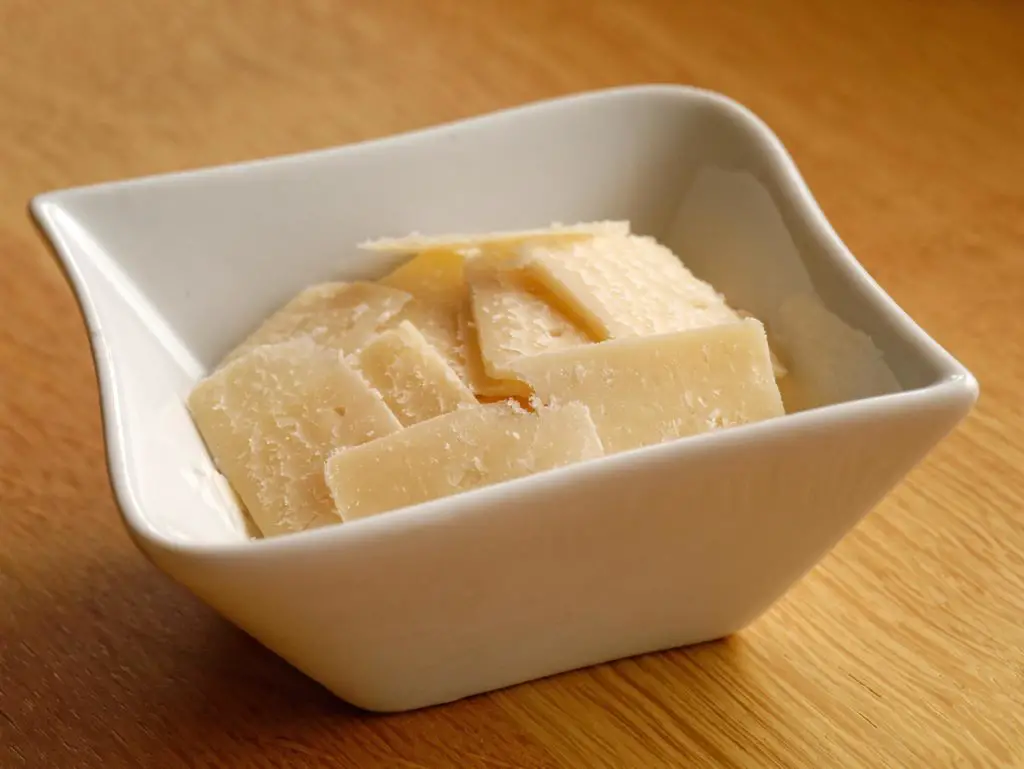Question: Is parmesan cheese dairy?
Answer: True parmesan cheese, called Parmigiano-Reggiano, is made from just milk, rennet, and salt. This is the good stuff made in only certain provinces of northern Italy. Unpasteurized cow’s milk is the main ingredient used to make this type of parmesan cheese. It is a dairy product just like all other milk-based cheeses.
Grated parmesan cheese like Kraft that comes in a shakable bottle also contains milk as its main ingredient. Other ingredients include salt, enzymes, cheese culture, cellulose powder, and potassium sorbate.
Be aware that some grated parmesan cheese manufacturers have come under fire lately for producing parmesan with purportedly excessive amounts of cellulose (wood pulp or other plant derivatives). Bloomberg had a selection of store-bought grated cheeses tested for “wood pulp”. Note that 2-4 percent was considered a safe level of cellulose, according to the article. Here is what they found:
- Essential Everyday 100% Grated Parmesan Cheese, 8.8 percent cellulose
- Wal-Mart Great Value 100% Grated Parmesan Cheese, 7.8 percent cellulose
- Whole Foods 365, 0.3 percent cellulose (ingredients on label did not reflect cellulose)
- Kraft, 3.8 percent
Lactose In Parmesan Cheese
Lactose is a sugar found in milk. People with lactose intolerance or who are sensitive to lactose have trouble breaking down lactose. This is because they lack sufficient production of lactase in the body. Lactase is an enzyme produced in the small intestine that helps break down the lactose.
Parmesan cheese is traditionally aged several months. It is not uncommon for Parmigiano-Reggiano to be aged for 24 months or more. The benefit to eating aged cheese is that as it sits, the lactose naturally breaks down. Parmesan contains a low level of lactose. As indicated by The Really Big List of Lactose Percentages, hard parmesan cheese contains 0.0% to 3.2% lactose, while grated parmesan has 2.9% to 3.7%. Generally, any food with a lactose percentage below 2% can be tolerated by most people with lactose intolerance.

